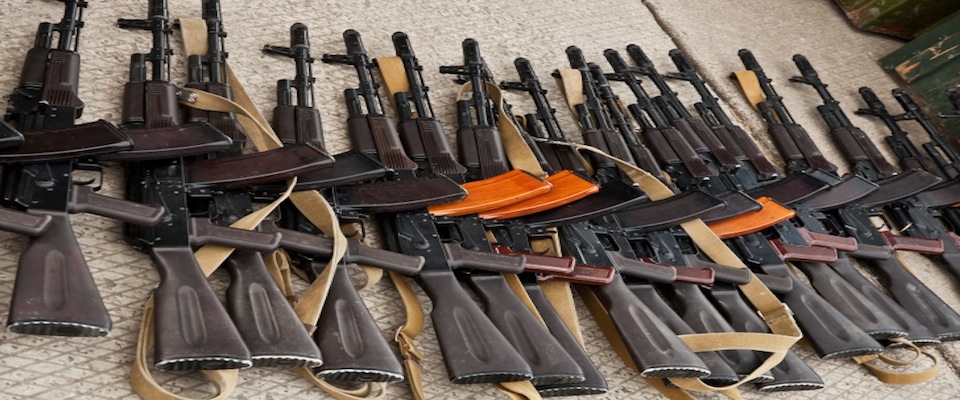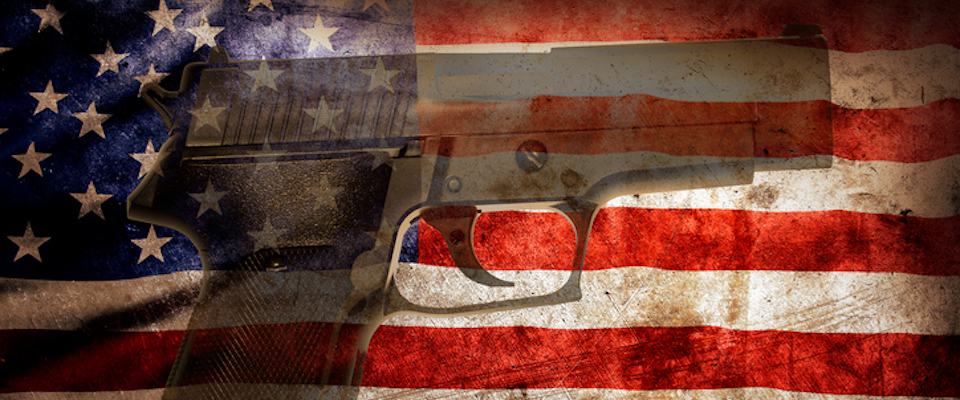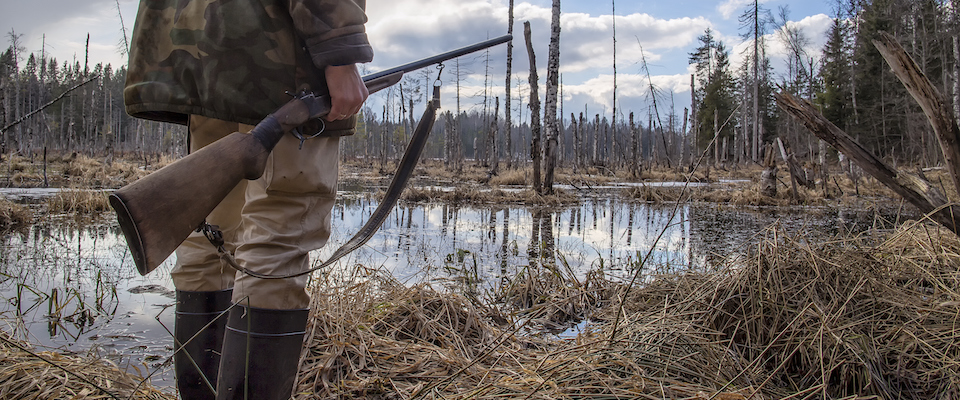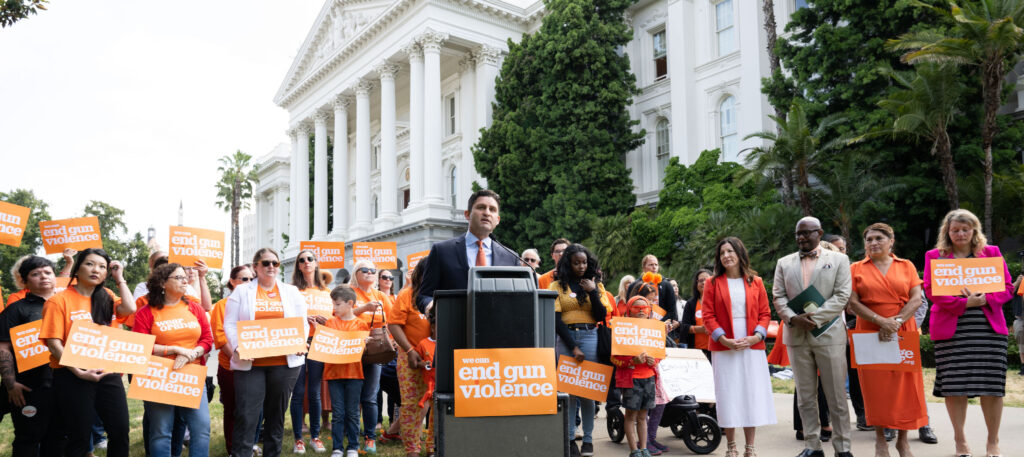In the short but statistic-fueled period after every recent U.S. mass shooting, the gun control debate is roused from its intermittent slumber. Whether the victims are in grade-school classrooms in Sandy Hook, on a college campus in Oregon, at a predominantly African-American church in South Carolina, or attending a holiday party in San Bernadino, the results have become predictable. Gun control advocates plead for tighter restrictions that might curb violence. Opponents cite the Second Amendment and purchase more weapons and ammo—making 2015 a record year for background checks on newly purchased firearms.
Life goes on—until for some, tragically, it doesn’t.
This week, the debate is intensifying because of President Barack Obama’s decision to actually do something: taking executive action to bolster enforcement of existing gun laws. Within hours of his emotional announcement, critics on one side worried that it wasn’t enough to make much difference, while critics on the other side denounced it as tyrannical overreach. GOP congressional leaders vowed not to fund its enforcement, and GOP presidential aspirants promised to repeal the plan. (The website of Iowa front-runner Ted Cruz featured a fundraising appeal with a doctored photo of the president in SWAT gear.)

Zimring has likened many gun show sellers now to carnival barkers: “Minors! People with felony records! Step right up!” The president’s new executive action “clarifies” the definition of who’s “engaged in the business” of selling firearms—meaning that many sellers at gun shows and on gun websites can no longer consider themselves exempt hobbyists, and thus their customers must be subject to criminal background checks. In short, the aim is to ensure that private sellers who sell guns regularly won’t be able to furnish guns to prohibited buyers as they may be doing now. Last year there were more than 23 million gun sales processed with background checks, but The New York Times reported that industry analysts have estimated up to 40 percent more firearms might have been sold no check whatsoever.
In addition, the FBI is to increase by 50 percent the number of workers processing background checks (already 63,000 requests per day), and the Social Security Administration is to explore how the criminal background check data could link into its mental health records.
Throughout his presidency, Obama has mostly been stymied in any attempt to promote new gun control. He cannot take action to specifically restrict the sale of so-called assault weapons without congressional authorization. And Congress—which previously had passed temporary legislation to ban such weapons, with limited success—let it expire years ago and won’t consider resurrecting it.
“First of all,” Zimring tells California, “you have different levels of government: federal, state, and local. It’s a three ring circus. Cities and states sway different ways from one another, and they all act in vastly different ways passing their own gun legislation, or lack thereof.”
“Red states are terrible places to try and pass any sort of legislation that make guns less accessible. Blue states have passed a lot of control laws. So at the state level, what you get is a wonderful paradox.” When there is a mass shooting in the country, he says, “New York and Connecticut have nothing left to prohibit.” But in Oklahoma and Texas, he adds, “they’re running out of things to allow.”
But of course, once purchased, guns can easily cross state lines. And with so many guns already in circulation, would gun policy make much of a difference, even at a national level?
“Maybe a little bit,” Zimring said. “But nothing you could do in a 60 million handgun U.S. is going to have an enormous bite. However important or symbolic on the mass shooting perspective assault weapons are, it’s good old handguns that contribute far more to the death toll. What you’re doing with gun control in the American context is operating at the margin, taking small bites.”
Every set of statistics concerning mass shootings, homicides, and crime rates in the United States tells a slightly different story. One fact, however, is inescapable: The United States is home to a lot of guns. Every graph shows us to be an international outlier on the spectrum of firearms per capita. But how is the high distribution of guns really affecting this country?
Contrary to dominant American perception, our homicide and crime rates have greatly decreased in the past two decades. Since the early 90s, our gun homicide rate has decreased by about half, and non-fatal violent firearm crime rates are about three times lower than 1993. These rates have been decreasing since the 1990s, though declining less dramatically since 2000. Mass shootings represent only about 1 percent of gun homicides, though they are increasing in frequency. As homicide rates have gone down, gun suicides now outnumber homicides 2-1.
Theories abound about why crime in general and gun homicide in particular has gone down, but in reality, said Zimring, “we’re not sure why. But it’s amazing.”
Even so, if we’re comparing our homicide rate by firearm to other “advanced” countries, we outpace the rest by a landslide, with a rate 16 times higher than Germany and 7 times higher than Switzerland. If we’re comparing ourselves to the world, we hit more of a median, with a much lower rate than Venezuela but far higher than China.
What’s most often fueling fervor in the gun control debate, however, is the frequency of mass shootings. Mother Jones, for example, sited Harvard research on our mass shooting rates with the definition including only public shootings with three or more victims killed. Based on those parameters, rates have tripled since 2011.
According to Zimring, “what constitutes a mass shooting is arbitrary… whatever you do, the tail of the distribution will be very small.” But when it comes to the volume of mass shootings, “it’s much higher in the United States than anywhere else. They exist in a lot of different places, but what characterizes the United States is recurrence,” Zimring said.
“Gun availability is a necessary condition for a volume of mass shootings…. You don’t see mass knifings. Unless you’ve got a lot of friends,” Zimring said. “The important thing here is this is where all the stats become irrelevant. The trend-over-time of mass shootings and the definitions of mass shooting doesn’t really matter. We have a lot. It is a chronic condition of American life. Not because we have more crazy people in the U.S. than they have in Canada or Scotland or the Ukraine. But we have the combination of crazy individual isolated people and lots and lots of guns. And that, you know… that’s pretty simple.”





















